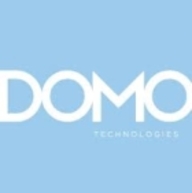

Domo and Splunk Cloud Platform are both key players in the data management and visualization space, with Domo standing out for its ease of use and Splunk excelling in real-time monitoring. Depending on the focus, Domo offers a more accessible platform while Splunk provides more robust security analytics.
Features: Domo is valued for its user-friendly interface, extensive third-party connectors, and efficient Magic ETL for transforming data. It's designed to enable users without technical expertise to handle data efficiently. Splunk Cloud Platform is known for its powerful real-time monitoring and search features, which are essential for enterprises focusing on security and operational analytics. Its enterprise security features and integration abilities make it suitable for complex monitoring requirements.
Room for Improvement: Domo could benefit from enhanced visualization customization, better technical support, and improved performance with large datasets. It also has fewer sophisticated charting options compared to competitors. Splunk users often encounter high costs and complexities with large data volumes. They seek improvements in administrative ease, user interface customization, and clearer documentation. Both platforms require better customer support and customization options.
Ease of Deployment and Customer Service: Domo offers flexible deployment options including on-premises, cloud, and hybrid environments, although post-deployment support can be inconsistent. Some users praise its responsive customer service, while others note delays. Splunk Cloud Platform is primarily cloud-based with some hybrid capabilities, noted for its easy deployment. However, customer service reviews are mixed, with some users reporting slow communication and resolution times.
Pricing and ROI: Domo is perceived as expensive but valuable for companies that can utilize its features, offering substantial ROI through improved efficiencies and data-driven decisions. Smaller entities might find its costs prohibitive. Splunk Cloud Platform is cited as costly, with expenses tied to data usage. Despite this, its comprehensive features justify the price for larger enterprises. Both platforms pose financial challenges but can yield significant ROI when effectively utilized.
While they eventually provide the correct answers, their support for smaller customers could be improved.
Premium support is costly and may not always provide a satisfactory experience.
Sigma, which is written for Snowflake, scales more easily than Domo.
End users require a license to run their own reports and dashboards, which are fairly expensive.
The pre-built reports in Splunk Cloud Platform are generic and require manual adjustments to extract specific, granular information, which requires the user to be knowledgeable.
Domo is expensive compared to other solutions.
Splunk Cloud is considered too expensive, with its two product offerings both being costly.
I have been using it for four years and have been able to extract the information I need from it.
The most valuable feature of Splunk Cloud Platform is its robustness and ability to ingest logs.


Domo is a cloud-based, mobile-first BI platform that helps companies drive more value from their data by helping organizations better integrate, interpret and use data to drive timely decision making and action across the business. The Domo platform enhances existing data warehouse and BI tools and allows users to build custom apps, automate data pipelines, and make data science accessible for anyone through automated insights that can be shared with internal or external stakeholders.
Find more information on The Business Cloud Here.
Splunk Cloud Platform is widely used for log management, security monitoring, application performance monitoring, troubleshooting, data aggregation, and IT operations. It centralizes logs from numerous sources, enabling detailed analysis, incident detection, and effective dashboard creation.
Companies across various industries leverage Splunk Cloud Platform for cybersecurity, compliance, user activity monitoring, and alerts. It helps in managing cloud environments, optimizing data storage costs, and enhancing customer insights with effective data visualization. The platform's robust capabilities include customizable reporting, flexible log sending, powerful search features, and seamless integration with other systems. Users monitor multiple environments and platforms effortlessly with the cloud infrastructure maintained by Splunk. Despite its advantages, users find the pricing steep, support ineffective, and encounter performance issues with large data volumes. Integration challenges, limited training resources, and insufficient documentation also pose concerns.
What are the most important features of Splunk Cloud Platform?Splunk Cloud Platform is implemented across industries including finance, healthcare, retail, and technology. Organizations use it to enhance cybersecurity measures, meet compliance requirements, monitor user activities, and issue automated alerts. In finance, it assists in fraud detection and compliance. In healthcare, it ensures data security and regulatory adherence. Retailers use it for customer behavior analysis and performance monitoring, while technology companies benefit from its troubleshooting and log management capabilities. Despite its powerful features, companies face challenges with pricing, support, and integration that require consideration during implementation.
We monitor all Data Visualization reviews to prevent fraudulent reviews and keep review quality high. We do not post reviews by company employees or direct competitors. We validate each review for authenticity via cross-reference with LinkedIn, and personal follow-up with the reviewer when necessary.